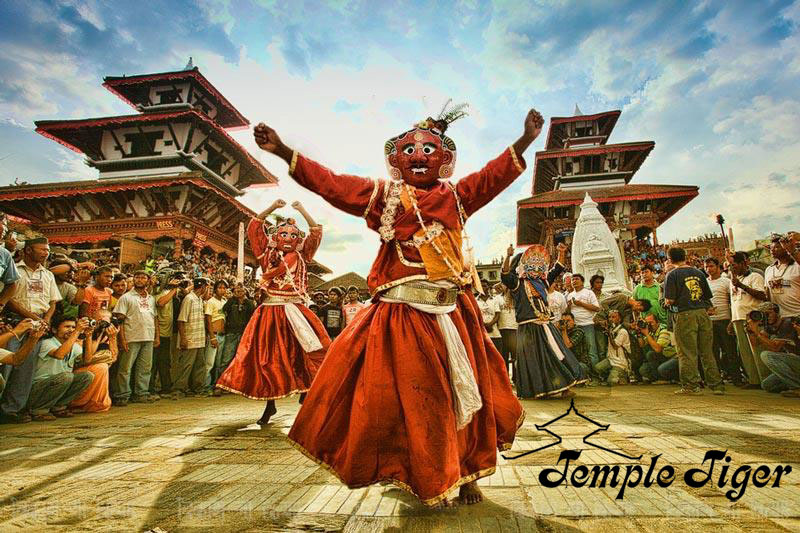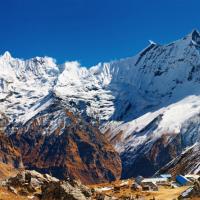Cultural Glimpses
Nepal - the County that was never invaded by foreign powers is the symbol of peace and integrity, so are its cities. Kathmandu is the capital city, an ancient city with a step on its glorious past and another on the modern world. It is well renowned for cultural heritages along with history of providing evidence that it has preserved for centuries. The city is adorned with ancient temples, monuments, artworks carved on every corner. The city has sacred Hindu and Buddhist shrine of Pashupatinath and Boudhanath in its vicinity. A visit to these sites can make you lose yourself for quite some time in its extraordinary ambience of peace and faith. Apart from the religious importance, the structure with its artworks is quite impressive and unique. The Kopan Stupa and nunnery situated in north of the ancient town of Boudhanath where monks and nuns devote their life, learning, practicing and conserving the teachings of Lord Buddha. The Tibetan artwork is spectacular and atmosphere around is enchanting.
Similarly, the city of Pokhara is well celebrated for its natural scenery, museums, temples and landmarks that provides a glimpse of the actual city, its heritages, cultures and the history that it have been kept preserved. The city awakens strong emotions among visitors who desperately fall in love with its friendly people, landmark sites and splendid natural beauty that surround the city. Meanwhile, the visit to the city of Bandipur showcases the endless elegant vista of Mother Nature that permits the senses to be refreshed.
Detail Itinerary
Day 1 - ARRIVE KATHMANDU
Meet, assist upon arrival in Kathmandu airport by our representative by putting a garland and escort to the hotel in Kathmandu.
A Short briefing will be conducted at the hotel about the itinerary and the do's and don'ts with a welcome drink for about 15 minutes. The keys to the respective rooms will be handed over of the guests later.
Lecture on Nepali culture by the Group Leader
Overnight at hotel in Kathmandu
Day 2 - FULL DAY KATHMANDU TOUR
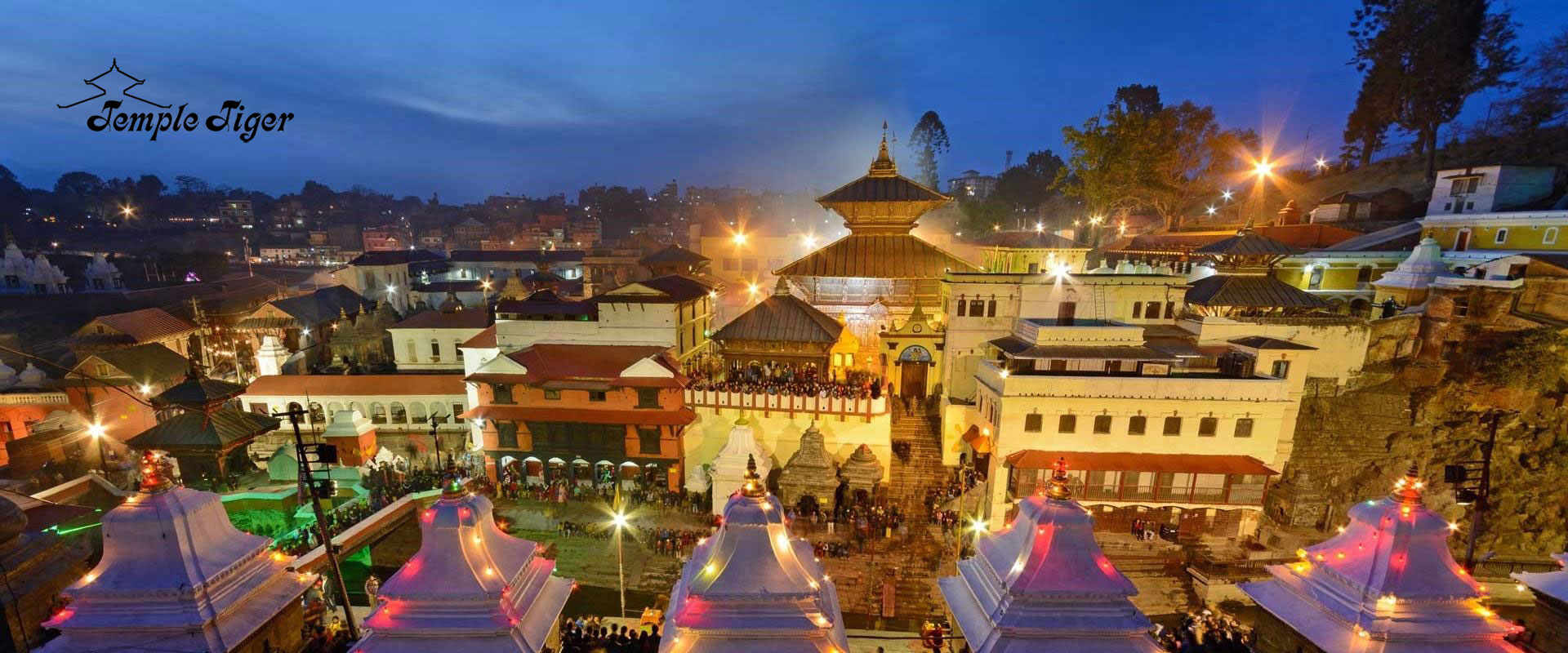
Breakfast at hotel
AM: Visit Monastery and Kapan Nunnery
Kapan Monastery lies to the north of the famous Boudhanath Stupa and is a monastery in Gelug tradition of Tibetan Mahayan Buddhism. Gifted with a majestic view of the city, the Monastery also is a home for 360 monks, lamas, teachers and workers alike from all over Nepal and Tibet.
The Monastery is committed in helping all beings develop their full potential of infinite wisdom and compassion as taught by Lama Thubten Yeshe, the establisher of this monastery.
(Note: Visitors are restricted during the course of meditation retreat in Kapan Monastery. These courses only take place if there are enough students. In such case, alternative monastery visit in the same area will be provided)
Kapan nunnery was established more than 2 decades ago under the spiritual guidance of the founders of Kopan Monastery, there has been rapid growth as there were only few nunneries in Nepal and India. Each year the nunnery admits 30 nuns. 50% of these nuns are orphaned, 25% come from homes with single parents and the rest from very poor families. The nunnery provides full scholarship to each and every nun including accommodation, healthcare, food and education. Many of the nuns go on to become doctorates in Buddhism and inspirational spiritual teachers.
We will have a home hosted lunch with interaction program with the family members talking about daily life and experiences.
PM: Proceed for sightseeing tour to Pashupatinath Temple and the Boudhanath Stupa
Pashupatinath temple: One of the most sacred Hindu shrines in the world, Pashupatinath lies in the bank of river Bagmati. The two-storied pagoda houses a sacred lingum, or the phallic symbol of Lord Shiva. Although the temple dates back to the 4th century, it was brought into its present shape in the early 18th century. The temple is most noted for its gold-plated roofs and silver-coated doors. Sadhus and sages, who follow the lifestyle of Lord Shiva, are seen covered with ashes and loincloths. The banks of the river Bagmati, is also considered one of the holiest places in which to get cremated and cremations can be witnessed here. All tourists are requested that certain respect is shown for the grieving.
Continue to Boudhanath, possibly the world's largest Buddhist Stupa and a site of great veneration for Buddhists.
Around the stupa have sprung up number of monasteries of the different sections of Tibetan Buddhism including one (on the west side of the stupa) that houses an enormous seated statue of Maitreya Buddha splendidly adorned.
Overnight at hotel in Kathmandu
Day 3 - KATHMANDU – POKHARA BY FLIGHT
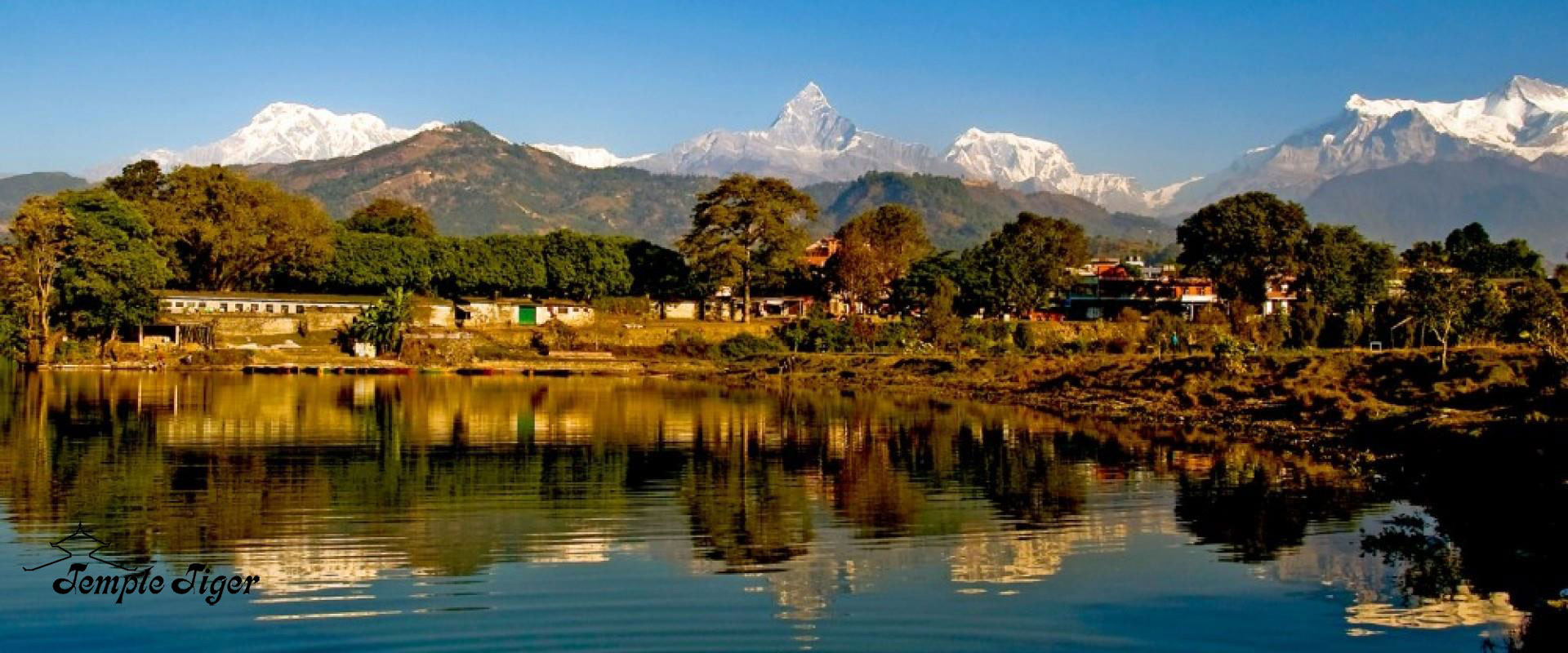
Breakfast at hotel
Fly to Pokhara and transfer to hotel. Flight time: 30 min
Pokhara, Sub-Metropolitan City is the second largest city of Nepal and is situated about 200 km west of the capital Kathmandu. It serves as the headquarters of Kaski District, Gandaki Zone and the Western Development Region. Pokhara is one of the most popular tourist destinations in Nepal. Three out of the ten highest mountains in the world — Dhaulagiri, Annapurna I and Manaslu — are situated within 30 miles (linear distance) of the city, so that the northern skyline of the city offers a very close view of the Himalayas. Due to its proximity to the Annapurna mountain range, the city is also a base for trekkers undertaking the Annapurna Circuit through the ACAP region of the Annapurna ranges in the Himalayas.
PM: Half day sightseeing tour of Pokhara Valley
Devi’s Fall: Locally known as Patale Chango (Hell’s Fall) also known as Devins and Davids is a lovely Waterfall which is about 2 km south West of Pokhara airport on the Siddhartha Highway. Legend has it that a trekker by the name of Davy, was washed away by the Padi Khola and mysteriously disappeared down into an underground passage beneath the fall.
Mahendra Cave: Another of nature’s wonders in Pokhara is the Mahendra gufa. This large limestone cave is locally known as the House of Bats an apt name for it. A two- hour's walk to the north of Pokhara, it is best to bring our own torch to see the stalactites and stalagmites, as well as the local winged residents.
Seti Gandaki Gorge: Another of Pokhara's natural wonders is the Seti Gandaki River. Flowing right through the city, the boisterous river runs underground at places. Amazingly, at certain places the river appears hardly two meters wide. However, its depth is quite beyond imagination, over 20m. Mahendra pul, a small bridge near the old mission hospital, provides a perfect view of the river’s dreadful rush and the deep gorge made by its powerful flow.
Bindyabasini Temple: The old Bazaar is also home to one of Pokhara’s most important shrines. Locally called the Bindyabasini Mandir, this white dome- like structure dominates a spacious stone – paved courtyard built atop a shady hillock. It is dedicated to Goddess Bhagawati who is yet another manifestation of Shakti. The park – like grounds offers a fine picnic area, and on Saturdays, and Tuesdays when devotees flock there to offer sacrifices, it takes on a festive flavor.
Overnight at Hotel in Pokhara
Day 4 - POKHARA
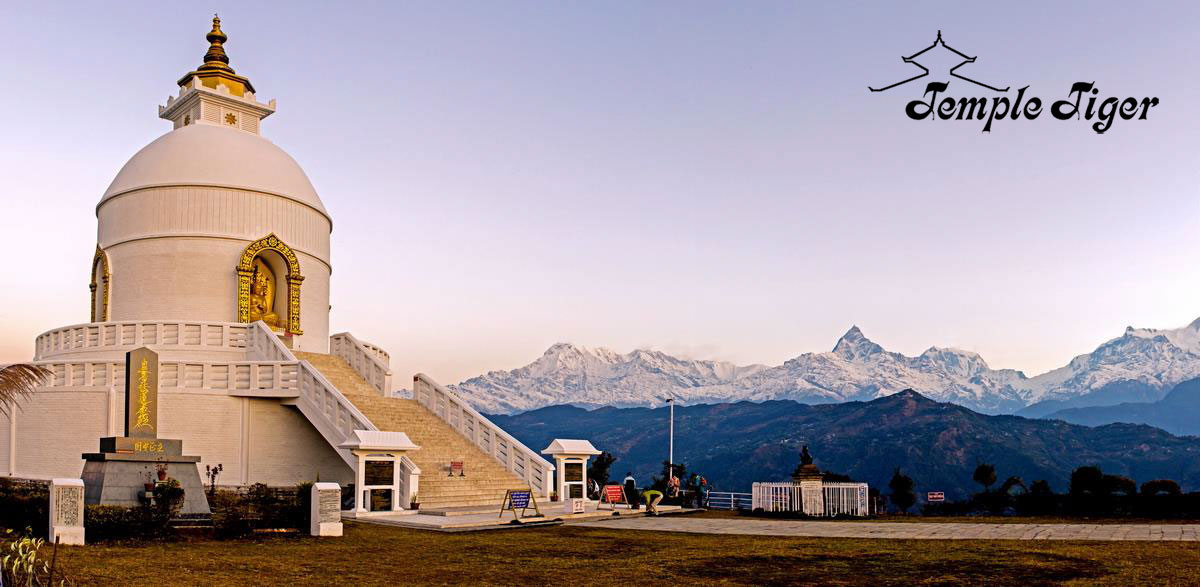
AM: Visit World Peace Pagoda
World Peace Pagoda, a massive Buddhist stupa is situated on the top of a hill on the southern shore of Phewa Lake. Besides being a impressive sight in itself, the shrine is a great vantage point which offers the spectacular views of the Annapurna range, Phewa Lake, and the Pokhara city.
PM: Visit Mountain Museum and Gurkha Museum
Mountain Museum: Nepal Mountaineering Association (NMA), established on 1 Nov 1973, initiated the establishment of International Mountain Museum (IMM) in Pokhara. The basic objective for its establishment was made to record, document and chronicle the past and present development of mountaineering activities in the world in general and to preserve the saga of the momentous feats in the history of mountaineering in the Himalayan peaks in particular.
Gurkha Museum: The MUSEUM concentrates on their history to current British Army and the Indian Army. The displays include hundreds of photographs of the many campaigns they took part in and their regimental life. The 3-Floor galleries are brought alive by sound and colored light. Displays also include uniforms they wore, items they used and medals they won. Details of the Gurkha Victoria Cross winners, the highest bravery medal with their citations can also be viewed.
Home hosted dinner with interaction with family member
Overnight at Hotel in Pokhara
Day 5 - POKHARA - BANDIPUR BY SURFACE
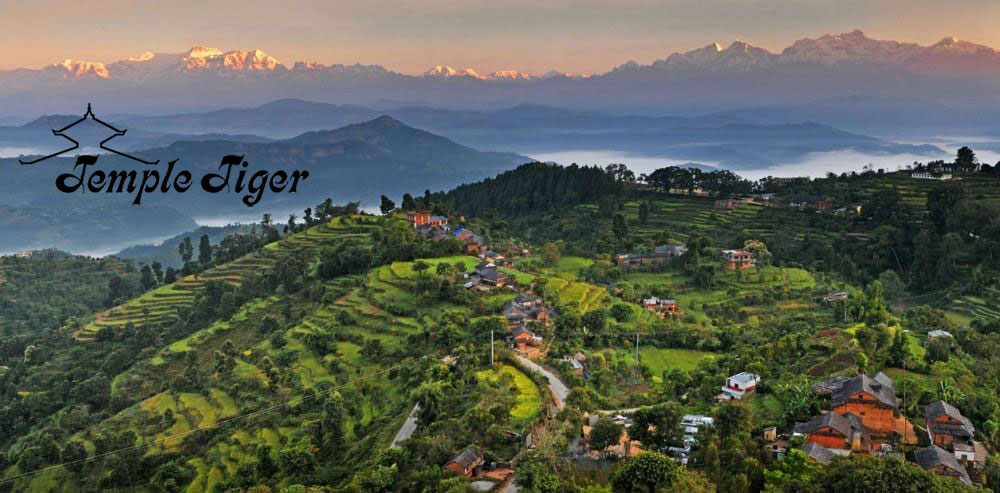
After having breakfast, drive to Bandipur and transfer to hotel.
Afternoon visit around Bandipur
Bandipur is a beautiful town situated on a high ridge above Dumre. With its glorious eighteenth century Newari architecture, the whole town is like a living open-air museum of Newari culture. Before the construction of the Pokhara to Kathmandu Highway, this town was a major stop on the trade route between India and Tibet. Though not busy trades stop any more, the city is still frequently visited by a lot of people.
Tundikhel, Baralthok, Rani Ban, Bindebasini Mandir, Mahalaxmi Mandir, Khadga Devi Mandir, Tin Dhara and Bandipur silk farm are some interesting sites in Bandipur. You can also explore the hills around Bandipur and take a walk to the Siddha Gufa (the largest cave in Nepal), Patal Dwar & hike to a nearby hill known as Gadhi.
Walking tour in Bandipur to visit temples and see the Newari Architecture and interact with the locals to understand their lifestyle.
Overnight at Hotel in Bandipur
Day 6 - BANDIPUR – KATHMANDU BY SURFACE
Breakfast at hotel
Drive back to Kathmandu and transfer to hotel.
Evening farewell dinner at local Nepali restaurant with cultural show
Overnight at hotel in Kathmandu
Day 7 - DEPARTURE
Free till departure and later, transfer to the International Airport to connect the flight to onward destination.
